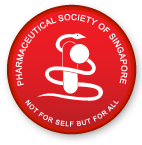Here are some selected safety news for your quick update.
• Boehringer Ingelheim withdraws Silomat
• Rocephin + Ca = Potential Fatal Reactions
• Preventing Patient Deaths from Fentanyl Patches
• Hospitals Can Enhance Patient Safety
• Boehringer Ingelheim withdraws Silomat
Despite a longer market experience of 200 million patient exposures since 1961, Boehringer Ingelheim has decided to voluntarily withdraw its clobutinol hydrochloride containing medications (Silomat) in all countries including Singapore. Patients are asked to discontinue its use.
New findings from a clinical study in healthy subjects suggest that a potential risk of cardiac arrhythmia can not be excluded. This potential risk might be very low, but considering the indication and the availability of therapeutic alternatives, Boehringer Ingelheim has decided in the interest of patient safety to withdraw its Clobutinol containing products from the market.
• Rocephin + Ca = Potential Fatal Reactions: Warning Expanded
The US FDA issued a new alert to advise healthcare professionals about the updated safety labeling for ceftriaxone sodium injection (Rocephin). This describes the potential risks associated with concomitant use of calcium or calcium-containing solutions & products like Ringers & Hartman solutions in patients of any age.
Cases of fatal reactions with calcium-ceftriaxone precipitates in the lungs and kidneys have been reported in both term and premature neonates, according to an alert sent from MedWatch, the FDA's safety information and adverse event reporting program. Some of these cases occurred when ceftriaxone and the calcium-containing products were administered by different routes at different times.
In vitro studies have shown that ceftriaxone can displace bilirubin from binding to serum albumin, potentially leading to bilirubin encephalopathy, the FDA said. Use of ceftriaxone is therefore also contraindicated in hyperbilirubinemic neonates, both term and premature.
More info can be found at
http://www.fda.gov/medwatch
• Preventing Patient Deaths from Fentanyl Patches
A recent report from the Institute for Safe Medication Practices (ISMP) warns about the dangers of misprescribing fentanyl transdermal patches. ISMP reminds practitioners that these patches are intended only for patients who are opioid-tolerant, and should not be used for acute pain. In some cases, deaths occurred in patients who were prescribed multiple fentanyl patches, resulting in overdose and potential fatality. In other cases the fentanyl was prescribed in addition to other opioids, such as oxycodone, or it was prescribed for patients with pre-existing respiratory compromise. Pharmacists must be vigilant to identify a these issues and also educate the patients/family the potential serious adverse events related to strong opioids, and advise the proper disposal of the used fentanyl patches. There have been cases where children found used patches in the trash and applied them to their own bodies which resulted in fatalities.http://www.ismp.org/Newsletters/acutecare/articles/20070628.asp
• Hospitals Can Enhance Patient Safety in Relation to High-Alert Medications
Joint Commission Journal on Quality and Healthcare Safety recently presented a case study describing the effort made to reduce the rate of serious narcotic oversedation. "One of the Institute for Healthcare Improvement’s (IHI) campaigns is to 'Prevent Harm from High-Alert Medications... starting with a focus on anticoagulants, sedatives, narcotics, and insulin."
• Specific recommendations to improve safety with the use of anticoagulants are as follows:
1. Formatted anticoagulation flow sheets and orders should follow the patient through transfers from hospital, to skilled care facility, to home.
2. An anticoagulant dosing service or "clinic" is needed in both inpatient and outpatient settings.
3. Laboratory results should be reported to a provider who can act on the findings.
4. Pharmacists should be permitted to change doses of antithrombotic agents based on laboratory values by following protocols approved by medical staff.
5. The starting dose of warfarin should be limited to 2.5 or 5 mg, depending on patient age and/or comorbidities.
6. Medication orders should be checked for drug interactions.
• Specific recommendations to improve safety with the use of heparin are as follows:
1. Standardized protocols and dosing should be established and implemented.
2. Guidelines to hold heparin and give reversal treatment of heparin overanticoagulation should be developed.
3. Minimizing the number of available concentrations allows simplification and reduces the potential for errors.
• Specific recommendations to improve safety with the use of warfarin are as follows:
1. Standardized protocols should be used when starting and maintaining of warfarin therapy. These should include vitamin K dosing guidelines.
2. An evidence-based protocol should be developed to discontinue and restart warfarin perioperatively.
3. Laboratory results should be made available on the unit within 2 hours or should be monitored at the bedside.
4. International normalized ratio results vs dose changes should be plotted on the run chart or control chart.
5. Patients and families should participate in self-management.
• Specific recommendations to improve safety with the use of narcotics/opiates are as follows:
1. Protocols to begin and maintain pain management should be standardized.
2. Appropriate monitoring is needed to detect adverse effects of narcotics and opiates.
3. Protocols and reversal agents should be available that can be given without needing additional physician orders.
4. When the managing physicians are not experienced in pain control, a pain specialist should be consulted. Depending on the clinical setting, these may include specially trained nurses, pharmacists, physicians, or others.
5. Non-pharmacologic intervention for pain and anxiety should be maximized.
6. All pumps should be programmed and independently double-checked by pharmacy or nursing staff.
7. Patient-controlled analgesia and epidural narcotics should be independently double-checked on the unit.
8. Whenever possible, multiple drug strengths should be minimized or eliminated.
• Specific recommendations to improve safety with the use of insulin are as follows:
1. Before administering any intravenous insulin, the drug, concentration, dose, pump settings, route of administration, and patient identity should be independently double-checked.
2. Pretyped forms are recommended for diabetic and insulin infusion orders.
3. Look-alike and sound-alike drugs should be separated by labeling, time, and distance.
4. All infusions should be prepared in the pharmacy and standardized to a single concentration of intravenous infusion insulin.
5. Patients who are able to should manage their own insulin.
6. Meal and insulin times should be coordinated.
• Specific recommendations to improve safety with the use of sedatives are as follows:
1. Only 1 concentration of oral agents for moderate sedation should be stocked and prescribed.
2. Preprinted order forms should be used to order narcotics and sedatives.
3. All children who have received chloral hydrate for preoperative sedation should be monitored before, during, and after the procedure.
4. During procedures performed while the patient is sedated, as well as in other situations where sedatives are administered, age- and size-appropriate resuscitation equipment and reversal agents should be available.
The campaign's goal is to achieve a 50% reduction in harm related to high-alert medications. ADEs can be reduced significantly by implementing recognized safety measures, such as standardizing and simplifying core medication processes in known high-risk areas, redesigning delivery systems using proven human factors principles, partnering with patients, and creating safety cultures that minimize blame and maximize communication.
Adapted from: Jt Comm J Qual Patient Saf. 2007;33:537-542, 543-548.
**********


